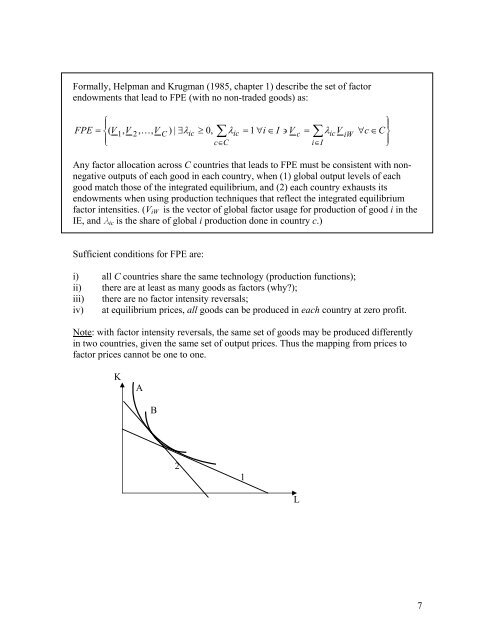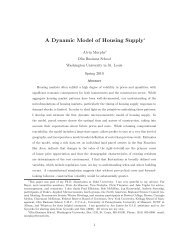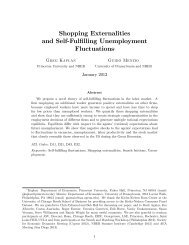1 J. Tybout Topics in International Trade (Econ 507B) Lecture 1 ...
1 J. Tybout Topics in International Trade (Econ 507B) Lecture 1 ...
1 J. Tybout Topics in International Trade (Econ 507B) Lecture 1 ...
You also want an ePaper? Increase the reach of your titles
YUMPU automatically turns print PDFs into web optimized ePapers that Google loves.
Formally, Helpman and Krugman (1985, chapter 1) describe the set of factorendowments that lead to FPE (with no non-traded goods) as:⎪⎧FPE = ⎨( V 1,V 2,K , V C ) | ∃λic≥ 0, ∑λic= 1 ∀i∈ I ∋ V c = ∑λicV⎪⎩c∈Ci∈IiW⎪⎫∀c∈ C⎬⎪⎭Any factor allocation across C countries that leads to FPE must be consistent with nonnegativeoutputs of each good <strong>in</strong> each country, when (1) global output levels of eachgood match those of the <strong>in</strong>tegrated equilibrium, and (2) each country exhausts itsendowments when us<strong>in</strong>g production techniques that reflect the <strong>in</strong>tegrated equilibriumfactor <strong>in</strong>tensities. (V iW is the vector of global factor usage for production of good i <strong>in</strong> theIE, and 8 ic is the share of global i production done <strong>in</strong> country c.)Sufficient conditions for FPE are:i) all C countries share the same technology (production functions);ii) there are at least as many goods as factors (why?);iii) there are no factor <strong>in</strong>tensity reversals;iv) at equilibrium prices, all goods can be produced <strong>in</strong> each country at zero profit.Note: with factor <strong>in</strong>tensity reversals, the same set of goods may be produced differently<strong>in</strong> two countries, given the same set of output prices. Thus the mapp<strong>in</strong>g from prices tofactor prices cannot be one to one.KAB21L7
















